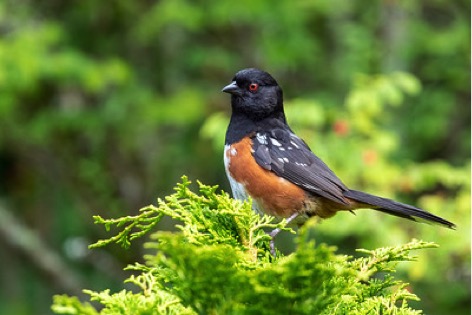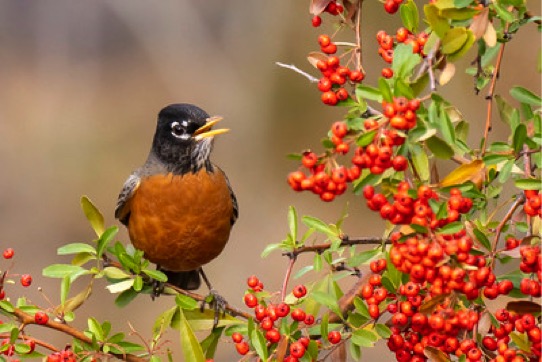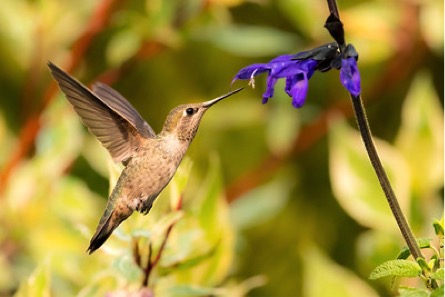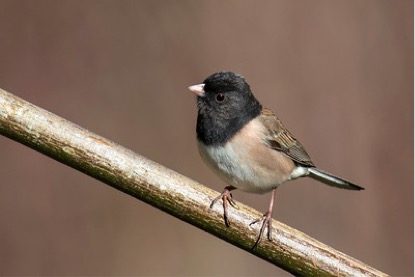LET’S TRANSFORM OUR COMMUNITIES INTO PLACES WHERE BIRDS FLOURISH
All photos by Mick Thompson
The Threat
Over the past century, urbanization has taken, fragmented, and transformed ecologically productive land with sterile lawns and exotic ornamental plants. We’ve introduced walls of glass, toxic pesticides, and domestic predators. The human-dominated landscape no longer supports functioning ecosystems or provides healthy places for birds.
The Solution
Each community has a unique ecological and cultural story to tell. Creating Bird-Friendly Communities is Audubon’s commitment to the sustainability of our urban, suburban, and rural places. We can restore and reconnect these places. We can reestablish the ecological functions of our cities and towns. We can provide an essential, safe habitat for birds.
https://www.youtube.com/watch?v=-HPBQBs4l4U
Plants for Birds
By simply choosing native plants for our yards and public spaces, we can restore vital habitat for birds in our communities and help them adapt and survive in the face of climate change. Audubon’s Plants for Birds program is designed to enable anyone to have a positive impact by planting for birds, right where they live. Visit the native plants database to create a customized list of plants native to your area, get connected to your local Audubon and native plant nurseries, and help us get 1 million plants in the ground for birds.
https://www.audubon.org/conservation/coleman-and-susan-burke-center-native-plants
Bird-Friendly Buildings
Glass and lights present major hazards to birds, killing hundreds of millions of birds each year. Birds hit buildings at all hours during the day and night. The problem is reflection or other confusing aspects of glass. Audubon chapters, centers and programs across the country are working to make buildings safer for birds.
https://www.audubon.org/news/reducing-collisions-glass
Avian Architecture: Providing Good Homes for Birds
From Wood Ducks and Barn Owls to Osprey and Western Bluebirds, many species of birds can be given a better chance to survive and thrive through a little assistance from structures we build—birdhouses, roosting towers, nest platforms, and artificial burrows. For some species, these structures tip the scales back in their favor, reducing declines in populations and restoring species to places they once inhabited.
https://nestwatch.org/learn/all-about-birdhouses/
OTHER IMPORTANT STEPS TO TAKE
Keep cats indoors – In the United States alone, outdoor cats kill approximately 2.4 billion birds every year. Although this number may seem unbelievable, it represents the combined impact of tens of millions of outdoor cats. Consider installing a “catio” or keep your cat indoors.
https://www.catssafeathome.org/catio-resources
Reduce cat kills with this specially designed collar: https://www.birdsbesafe.com/
Reduce window strikes – We all hate to hear that thud that speaks of a bird hitting one of our windows. Here are some steps you can take.
https://www.audubon.org/news/reducing-collisions-glass
https://abcbirds.org/glass-collisions
Avian Flu and Bird Feeders –
Unless you also have backyard flocks of chickens, ducks or turkeys, you do not need to remove your bird feeders. See a complete explanation from The Cornell Lab of Ornithology:
https://www.allaboutbirds.org/news/avian-influenza-outbreak-should-you-take-down-your-bird-feeders/
Reduce outdoor lighting – Birds can become disoriented by bright artificial lights and sky glow, often causing them to collide with buildings or windows. However, bird fatalities are more directly caused by the amount of energy the birds waste flying around and calling out in confusion. The exhaustion can then leave them vulnerable to other urban threats. Here are ideas to consider:
- Turn off exterior decorative lighting
- Extinguish pot and flood-lights
- Substitute strobe lighting wherever possible
- Reduce atrium lighting wherever possible
- Turn off interior lighting especially on higher stories
- Substitute task and area lighting for workers staying late or pull window coverings
- Down-shield exterior lighting to eliminate horizontal glare and all light directed upward
- Install automatic motion sensors and controls wherever possible
- When converting to new lighting, assess quality and quantity of light needed, avoiding over-lighting with newer, brighter technology
Certify your property as wildlife habitat – Spread the word about your efforts to provide habitat for wildlife by getting your yard certified and posting a sign that friends and neighbors can see. Get people thinking about joining you! These three programs have different costs and requirements.




